North Korean farmers under pressure to feed hungry nation
Kim Jong-un has vowed that North Korea will 'never have to tighten its belt again'. But can this isolated, autocratic and impoverished country escape the ghosts of famine?
Rim Ok-hua looks out over her patch of farm just across the Tumen River from China with a mixture of satisfaction and concern.
Rows of young potato plants, lush and green against the deep brown of the wet soil, stretch into the distance almost as far as the eye can see. As North Korean farmers go, Rim is exceptionally lucky.
Singled out for success by the late leader Kim Jong-il, the Changpyong Cooperative Farm where she works is mechanised, has 500 pigs to provide fertiliser and uses the best available seeds, originally brought in from Switzerland. Rim laughs when asked about the hardships of life in the fields. "It's easy," she says.
That's a claim most farmers in North Korea can't make. Not far down a bumpy dirt road to a neighboring province — and in most fields throughout the country — farmers are working the fields by hand, or behind bony oxen.
There is, however, one thing Rim and her comrades across the country share. This year, even more than most years, they are under intense pressure to feed a hungry nation.
As every North Korean schoolchild knows, leader Kim Jong-un has succeeded in establishing his country as a nuclear power, and even sent a satellite into orbit.
Now, with the nation he inherited from his father squeezed by prolonged international sanctions and largesse from its former communist allies mostly gone, Kim is calling on farmers to win him another battle.
In one of his first public statements, in 2012, he promised the nation it will "never have to tighten its belt again" — a reference to the years of famine and economic crisis in the 1990s that left possibly hundreds of thousands dead. Even before the seeds were in the ground this spring, he made that call again.
But can North Korea — isolated, autocratic, impoverished and mountainous — ever escape the ghosts of famines past?
Legacy of famine
For more than four decades, farming in the North was characterised by heavy use of mechanisation and technological innovations, swiftly followed by chronic fuel and equipment shortages and long-term damage caused by stopgap policies. That legacy has left its mark not only on the North Korean psyche, but on its countryside.
Hillsides denuded of trees for terraced farming plots are common. These plots produce relatively little but increase the risk of damage from erosion or landslides.
Cows are few, but goats are everywhere, a reminder of the famine years and Kim Jong-il's mass goat-breeding campaign of 1996. Goats, known as the poor man's cow, were bred because they are easier to care for. But they also can eat their way into hillside shrubs, which makes the landslide problem even worse.
Soil fertility in many areas was trashed by decades of overuse of chemical fertilisers, up to the late 1980s. Yields still suffer.
North Korea has struggled to obtain tractor fuel for more than two decades, and because the country is largely urbanised, there is not much of a rural labour force to pick up the slack. That's why it is common to see housewives, college students and workers brought in from the cities, along with military units, to make up for the lack of mechanisation at crucial times.
There are many less tangible problems: state-controlled distribution, top-down planning and a quota system that doesn't fully encourage innovation and individual effort. All these factors make North Korea's agricultural sector a very fragile ecosystem.
Almost as soon as this season's rice was transplanted, the North's Korean Central News Agency reported that tens of thousands of hectares of farmland had already been damaged by drought. It quoted Sok Ji-dong, a deputy director of the Ministry of Agriculture, as saying troops had been mobilised to mitigate the disaster.
Right across the border in South Korea, Asia's fourth-largest economy, the weather went virtually unnoticed.
Even so, North Korea is by no means an agricultural lost cause.
As the summer growing months approach, the North Korean countryside is bursting with the bright greens of young rice, corn, soybeans and cabbage. On hillier ground lie orchards for apples and pears. Whole villages are devoted to growing mushrooms — another "magic bullet" innovation from the 1990s. It seems every valley and flatland, each nook and cranny, has been turned into a plot for some sort of crop.
Farmers who are old enough can even remember when the country is believed to have produced enough food to feed itself, in the mid- to late 1980s — though that required importing great amounts of fertiliser and fuel.
Signs of improvement
In the minds of North Korea's leaders, agricultural self-sufficiency is as much a key to the nation's survival as nuclear weapons are to keeping its foes at bay. Memories are still fresh of the devastating famine of the 1990s, known here as the "Arduous March." It was a perfect storm of bad weather, sparse resources and poor management that North Korea managed to ride out with massive international aid.
Kim's calls to the farmers may at least in part reflect Pyongyang's confidence in its longstanding "military first" policy — a strategy that for domestic audiences serves to justify and glorify how North Korea has poured its limited resources into nuclear weapons, long-range missiles and one of the world's largest militaries.
"Our nation is already a place of strong political ideals, and we have unmistakably attained the status of a strong military country," Kim said in a statement published February in the ruling party's official daily, the Rodong Sinmun. "We only need to achieve self-sufficiency by farming well, and then no matter what the enemy does, socialism in our style will be strong and provide sufficient food for revolutionary construction."
There are some signs of improvement.
The combined overall crop production for this year and 2013 is expected to increase by 5% to 5.98 million tons, according to a joint report compiled by the UN's Food and Agriculture Organisation and World Food Program. The report, released last November, estimated the North would still need to import 340,000 tons of cereals.
About 16 million of North Korea's 25 million people rely on state-provided rations of cereals. Reflecting the lack of variety in the fields, the average North Korean diet is alarmingly low on fats, proteins, vegetables and fruits. Stunting from chronic malnutrition is estimated to be as high as 40% in some areas.
But according to UN monitors, North Koreans have been getting larger rations of rice, potatoes and corn over the past two years. The production gap in the FAO-WFP report, meanwhile, is the smallest North Korea has seen in about two decades.
"There are multiple contributing reasons why production in 2013 was better than the recent past years: good weather, farms continuing to learn how to farm more productively with limited chemicals — sustainable farming, more use of manure and better compost," said Randall Ireson, an agricultural consultant who coordinated the American Friends Service Committee agricultural development program in the North between 1998 and 2007.
Ireson said all these trends have been noticeable since the early 2000s. He said efficiency could be further improved by continued shifts away from irrigation systems that require electrical pumps, by rotating and planting a wider variety of crops, particularly soybeans, and by using organic fertiliser rather than chemicals.
"No magic technology is needed," he said. "Just good 'best farming practices.'"
Changes taking place
In rural North Korea, some of those changes are well underway.
Nestled in high country near the scenic Mount Paektu, which North Koreans revere as the home of their revolution, the Taehongdan district became a national priority development area for potatoes around 2002, when Kim Jong-il decided the country should produce more because they give greater yields than corn fields. He made sure the district had all the machines and support it needed.
The Changpyong farm is one of its shining successes.
"We don't need chemical fertiliser," boasted farmer Jo Kwang-il, another of the Changpyong cooperative's 500 workers. He added that the farm started growing soybeans years ago and is now producing more than ever.
"We have pigs to produce tons of manure a year. They also provide meat, so that benefits our whole community," he said.
But for the whole agricultural sector to succeed, more systemic, and politically risky, changes may also be needed, such as relaxing central government command and bringing state-set prices for crops more in line with what farmers can get for surplus sold in farmers' markets. Right now produce can sell at the markets for 20 times more than what farmers get from the state.
By alleviating the dual-pricing gap, farms and divisions within them known as sub-work units could afford to reinvest their profits in small walk-behind tractors, rice-transplanting machines, fuel or fertiliser.
Experts are also watching to see if those sub-work units are given more control over particular areas within the larger collective. That could boost motivation, since, as Ireson says, responsibility and reward would be shared among a small group of friends or relatives, rather than the more general concept of "the cooperative" or "the state."
This kind of action, however, could move North Korea closer to sanctioning capitalist-style markets and reforms, which it has long resisted. Whether it will happen ultimately rests on the shoulders of Kim Jong-un.
In the meantime, as she stands near her potato patch, Rim says that despite a drought in the south it's been nothing but rain lately here in the high country. Almost too much of it. With her potatoes in the ground and the harvest not coming until September, all she can really do now is watch out for pests, make suggestions about fertiliser and hope for the best.
"The weather hasn't been so good lately," she said, squinting into the glare of the overcast, late-morning sky. But then, after a pause: "All of us farmers are working harder than ever. It will be a good harvest this year."
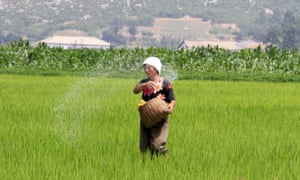
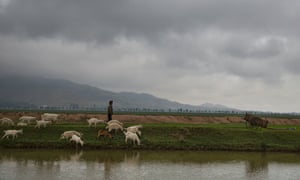



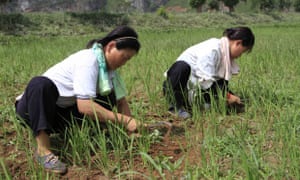
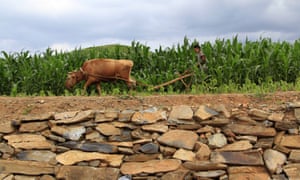
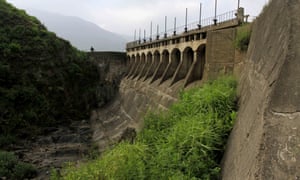
No comments:
Post a Comment